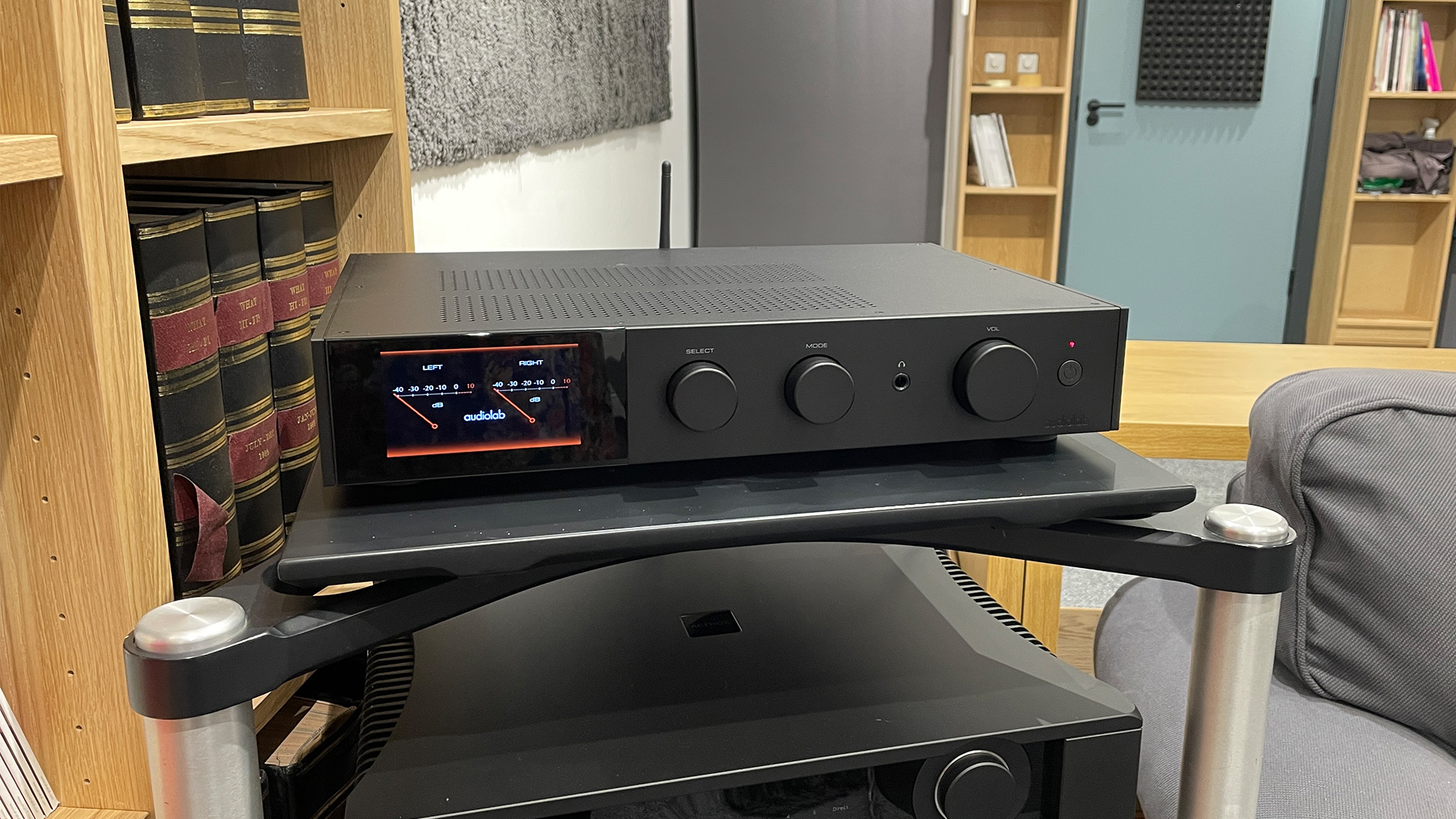
Audiolab’s first product was the 8000A. This hugely-successful integrated amplifier was launched in 1982 and was instrumental in establishing the brand as a major force in the market. That original design was a serious attempt to offer a sensibly-priced, fully-featured stereo amplifier that needed no excuses. It was beautifully made for the time, displaying a level of slickness that made most (British) rivals feel homemade.
The 8000A spec list was a match for any rival. We doubt there were many systems where that amplifier’s generous spread of inputs fell short. It belied the simplicity-first approach of most purist rivals by offering tone and balance controls alongside a headphone output, yet still remained in the conversation when it came to performance.
Build & design
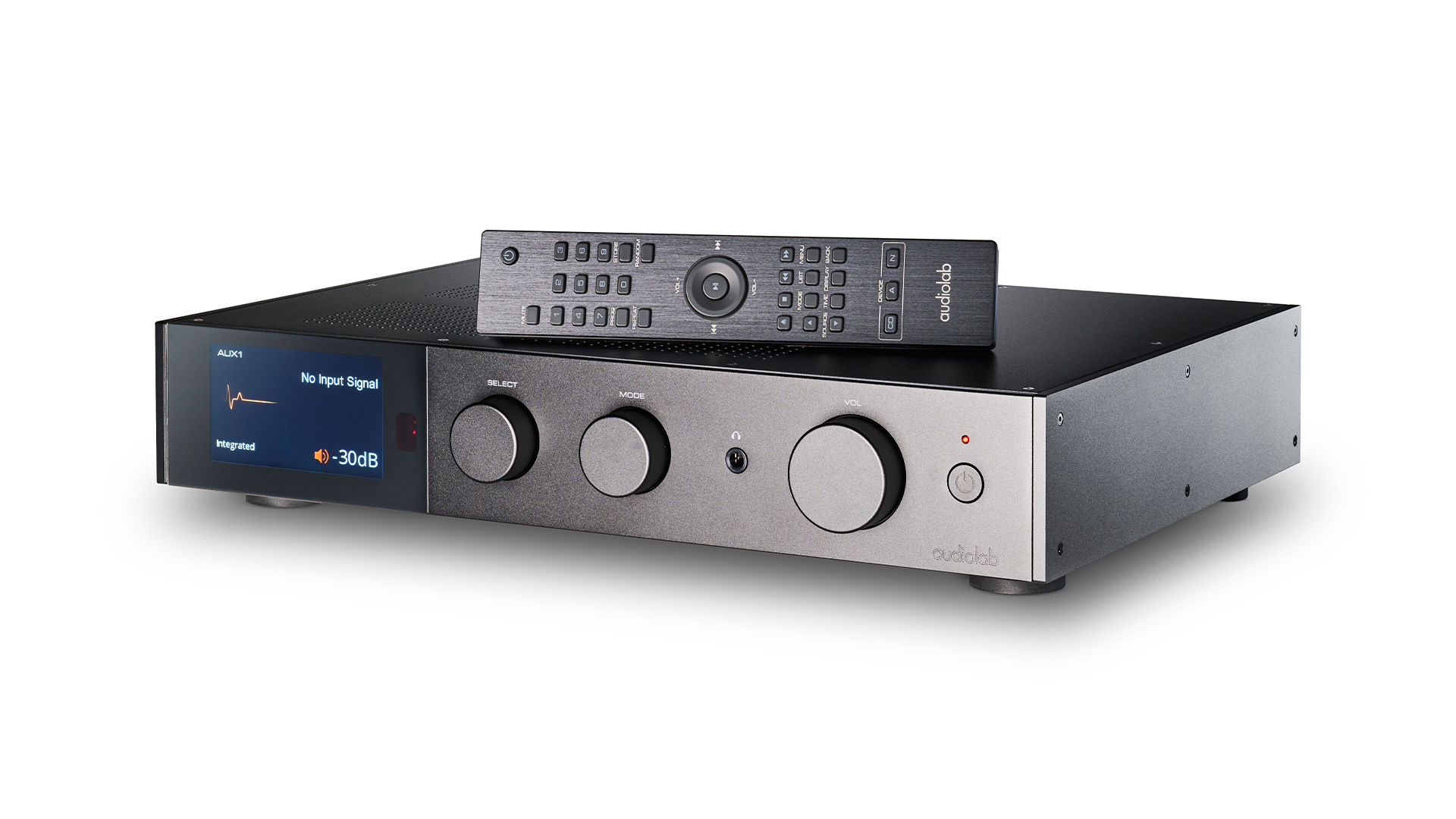
While much has changed with the Audiolab brand since then, we can see strong parallels between that original and the new Audiolab 9000A amplifier. Apart from slim proportions and clean aesthetics, both amplifiers also share a common ethos; one that aims to please most of the people, most of the time and in a wide range of systems. No easy task. Both amplifiers look smart but understated, though the moment the 9000A’s 4.3-inch colour LCD screen fires up there is no doubt that things have moved on.
It remains unusual to find such a display on a stereo amplifier, but it gives the newcomer a sophisticated modern feel and allows easy access to the set-up menu where it is possible to configure the product to taste. You can choose the digital filter setting, set the sensitivity for individual analogue inputs, adjust the balance between the speakers and control how long the amplifier idles before it enters standby mode.
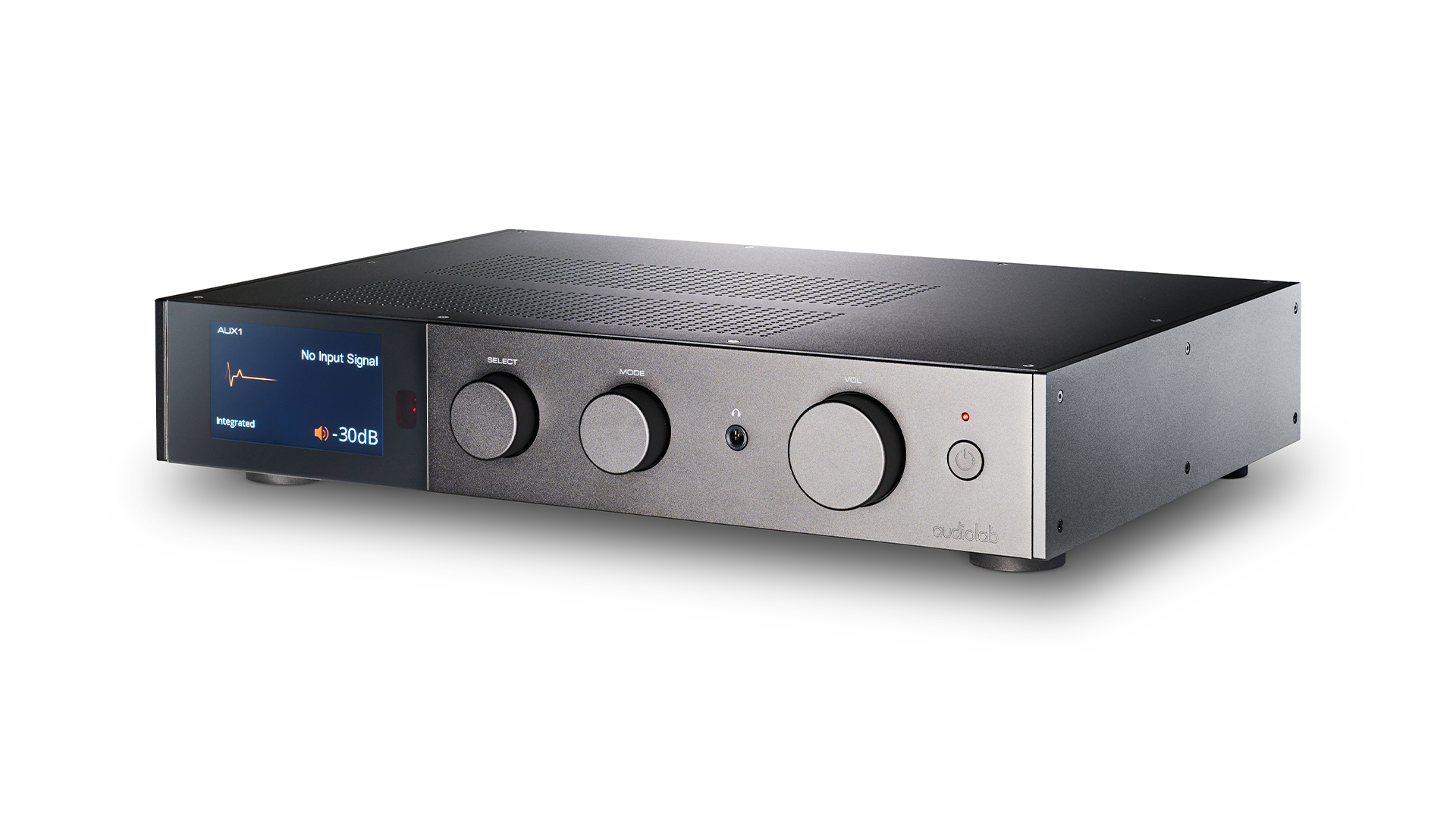
Type Integrated amplifier
Power output 100 watts per channel
Inputs 3x line level, phono, balanced XLR, 2x coaxial, 2x optical, USB Type B
Phono stage Moving magnet
Headphone output 6.3mm
Bluetooth? Yes
Dimensions 8.9 x 44.4 x 34.2cm
Weight 9.4kg
On a more day-to-day basis that screen can be switched to show VU meters (in digital or analogue form), the resolution of an incoming digital signal or just the volume setting. Or it can be turned off. It also indicates which mode the amplifier is operating in.
This mode feature is one that harks back to some of Audiolab’s earlier amplifier designs where it was possible to separate the pre and power sections and use them independently. This could be useful if you want to upgrade your system with something beefier than the 9000A’s built-in 100 watts per channel of power but still want to use the preamp section. Conversely, the 9000A’s power amplifier can be partnered with an external preamp, or you can use some sort of digital processor between the pre and power sections to manipulate the signal in some way. This kind of flexibility is unusual in integrated designs but can prove really useful.
We have no complaints about the 9000A’s build quality. The casework feels solid and nicely damped, while fit and finish are terrific. The front panel dials work with precision and that display is as crisp as you like, though we find some of the graphics on the small side to read from across a room. Overall though, Audiolab has done a fine job here.
Features
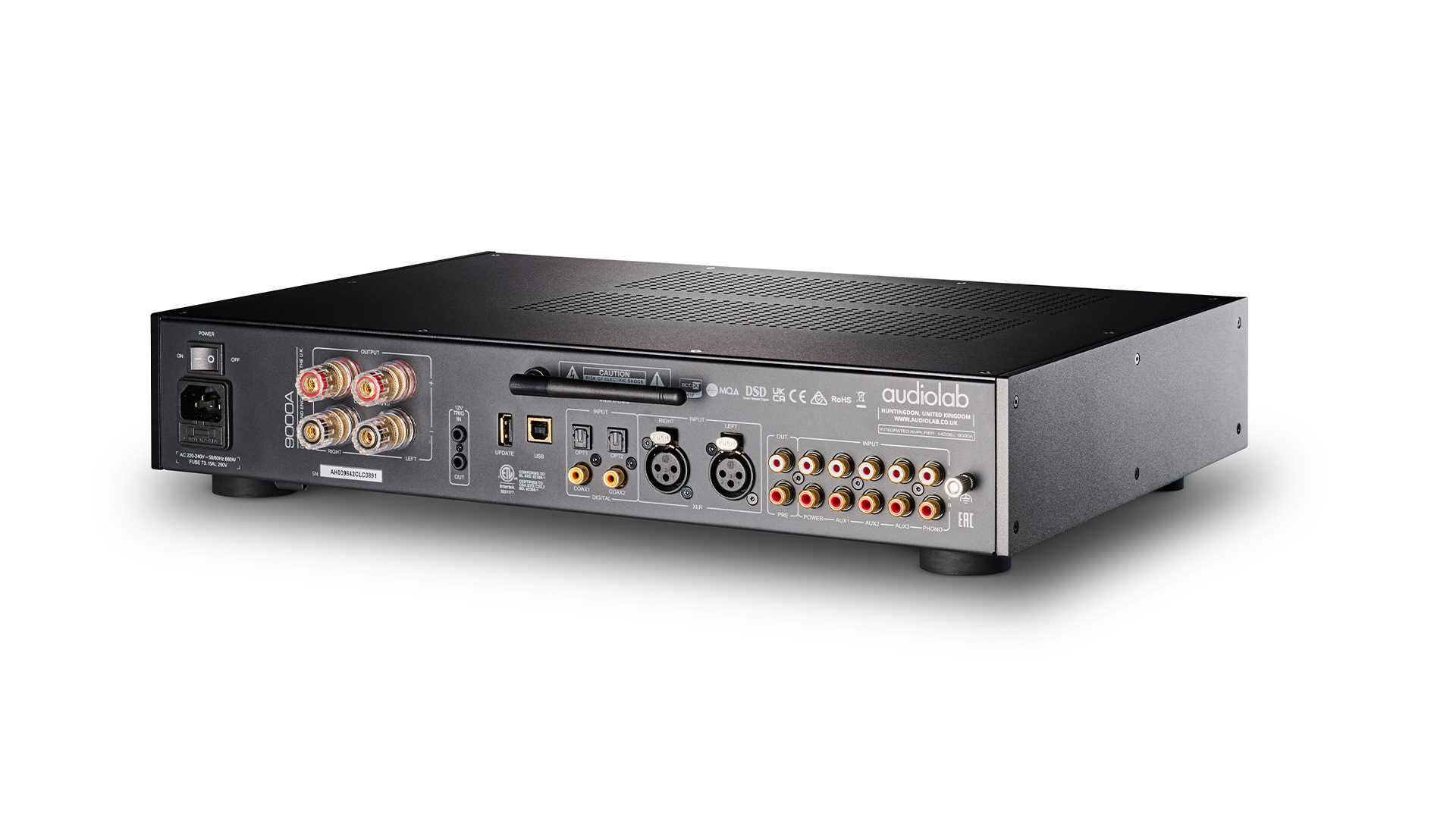
The Audiolab’s connectivity is great. On the analogue side, there are three single-ended inputs, a single pair of balanced XLR and a moving magnet phono stage. There are also dedicated single-ended connections for the preamp output and power amplifier input should you decide to split the 9000A this way. Move to digital and there is the usual trio of USB (Type B), coax (x2) and optical (x2) inputs. You’ll find a single set of speaker terminals on the back and a 6.3mm headphone output on the front panel. Don’t get too excited about the USB (Type A) socket on the back, as that is for software upgrades only.
We are pleased to find that Bluetooth 5.0 is on the menu, as it is still rare for products of this type. The 9000A is compatible with aptX HD, aptX Low Latency and LDAC, as well as the more usual AAC and SBC Bluetooth formats. While we think the sound quality from any of the wired connections produces better results we’re still glad that Audiolab decided to include Bluetooth. It works slickly and offers easy access to music on a phone, tablet or computer. We’re all for that.
Take a look inside the 9000A and you’ll find a digital-to-analogue circuit built around the ESS Sabre 9038PRO chip. This DAC gives the Audiolab compatibility with PCM files of up to 32-bit/768kHz and DSD512. It’s hard to argue that anyone needs any more than that. MQA is also on the menu, with the digital circuit able to fully unfold the signal. That will keep Tidal users happy.
The muscle is delivered by a Class A/B power amplifier arranged in a dual-mono configuration to optimise stereo imaging. A great deal of care has gone into the power supply arrangement. It is generously specified for starters, with a hefty 320VA toroidal transformer and 60,000uF of smoothing capacitance. But beyond that, there are dedicated feeds for each channel and for the more critical parts of the audio circuit. The aim is to reduce unwanted interactions, minimise noise and improve transparency.
Sound
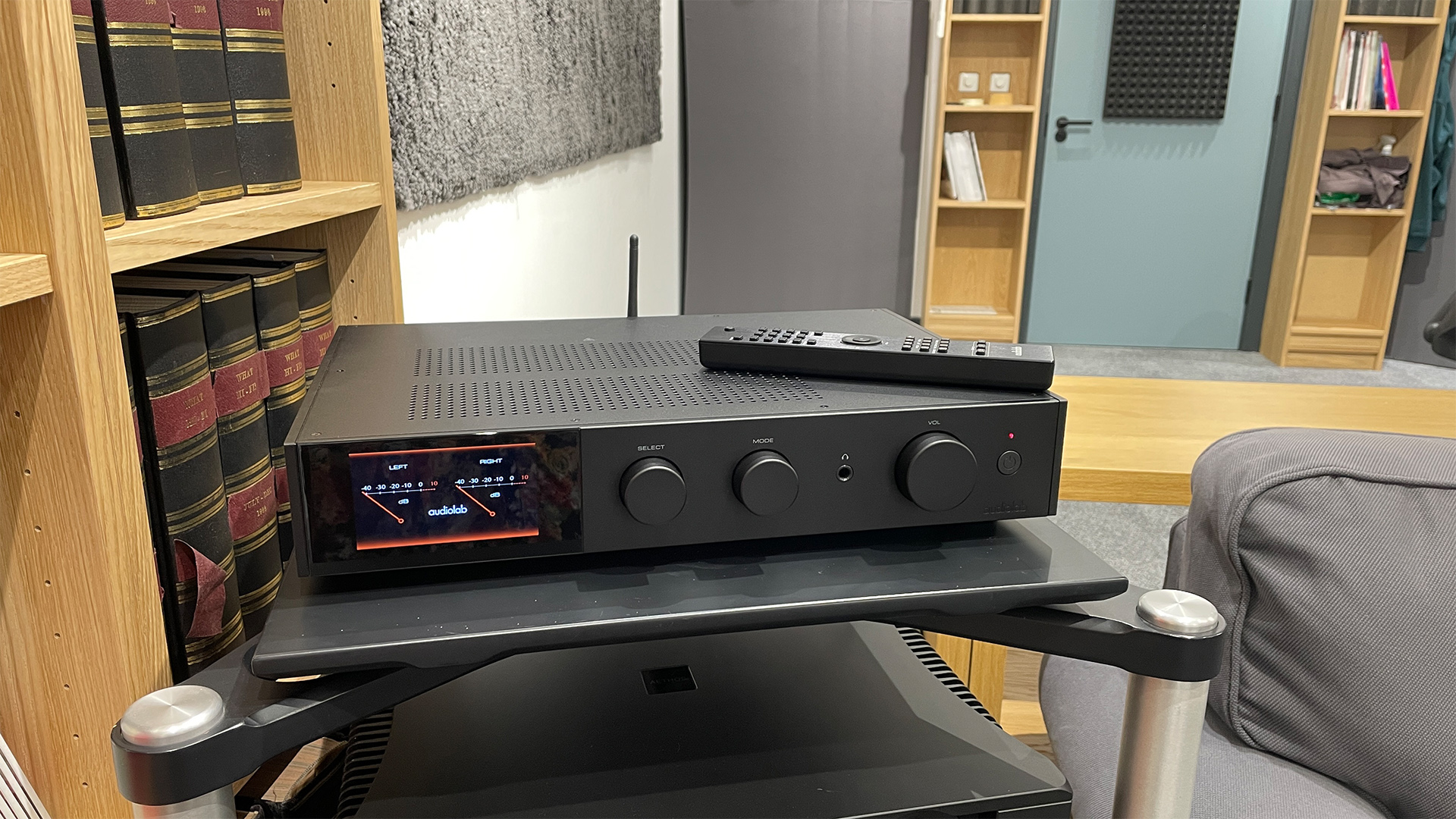
An amplifier at this level deserves a suitably talented partnering system. We use the 9000A in our reference set-up of Naim ND555/555 PS DR music streamer, Technics SL-1000R/Vertere Sabre record player and ATC SCM50 speakers to see what it does when the spotlight is on, but also use more price-compatible partners in the form of Chord’s 2go/Hugo2 music streamer, Naim’s Uniti Atom Headphone Edition (as a music streamer), KEF LS50 Meta standmounters and the Epos ES14N speakers. During the test we use the similarly-priced Naim Nait XS3 integrated, the pricier Rega Aethos and the cheaper Cambridge CXA81 amplifier for comparisons.
We start with the analogue line-level inputs and find that the 9000A sounds entirely familiar. It is certainly clearer and more insightful than any of the cheaper amplifiers we’ve heard from Audiolab’s current range, but the sonic character fits the family mould perfectly. It is an open and even-handed sound that’s more obviously neutral than most alternatives we’ve heard at this level. The presentation is impressively spacious too, layering the orchestra in Tchaikovsky’s 1812 Overture in a convincing manner. The sound staging remains stable even when the music becomes busy and is nicely focused.
That claimed power output of 100 watts per channel seems, if anything, a little conservative, with the 9000A generating good volume levels with any of the speakers we tried. Regardless of how loud the sound is, this is an amplifier that always sounds muscular and in control. Ask it to deliver large-scale dynamic shifts and it does so without sounding stressed, but that doesn’t mean it does so flawlessly, as we’ll find out later on.
The Audiolab can resolve plenty of detail and manages to organise all that information into a cohesive and musical whole. It is a crisply-defined presentation, but one that avoids hard edges, unless they are in the recording, of course. This isn’t a showy amplifier, in that it doesn’t go out of its way to flavour the sound of the recording to impress, and we’re grateful for that.
We switch to Michael Kiwanuka’s excellent Love & Hate set and the 9000A continues to please. The amplifier’s balanced nature means that no particular genre of music is favoured above any other. We enjoy the Audiolab’s clarity, the solid punch to the drums and the delicately textured way instruments are rendered. There is much to admire here, yet as we listen longer we notice that the music isn’t quite grabbing us in the way it should do.
For all the speed, punch and muscularity on offer, this amplifier doesn’t render dynamic contrast as emphatically as we would like. It leaves the Audiolab sounding a little restrained, as though it is uncomfortable about having a bit of fun. The integrated also holds back when communicating rhythmic drive, and doesn’t reveal the propulsive musical momentum of Kiwanuka’s Cold Little Heart with the verve we know the song has. It is still an enjoyable rendition, but the likes of the Naim Nait XS3 or the similarly priced Rega Elicit Mk5 deliver more entertainment.
Audiolab has massive experience in designing DACs and that shines through in the quality of the 9000A’s digital section. It is impressively clear, insightful, and bold. We listen to a wide range of music files from our MacBook Pro including high-res PCM and DSD files, and the Audiolab moves slickly between them. The amplifier offers five filter options, but after much chopping and changing we settle on the default choice which is Linear Phase (Slow Roll-off). It just sounded more musical to us. The sonic differences between the filters are relatively small, so it comes down to your system and taste. In other words, feel free to experiment as there is no right or wrong choice here.
We’re less taken with the phono stage. This is a moving magnet design and is pretty refined. It also sounds a little dynamically compressed compared to the line stages and fails to hold our attention. If vinyl rates highly on your list of priorities we would recommend adding a dedicated outboard unit from the likes of Rega or Moon.
Headphone outputs tend to be box-ticking exercises for most manufacturers but it is clear that Audiolab hasn’t taken any shortcuts in this area. The headphone circuitry retains the clarity we hear through the speaker outputs and matches its unassuming character. We try a range of headphones from the Beyerdynamic T1 Mk3 through to the Grado SR325x and the amplifier drives them all well.
Verdict
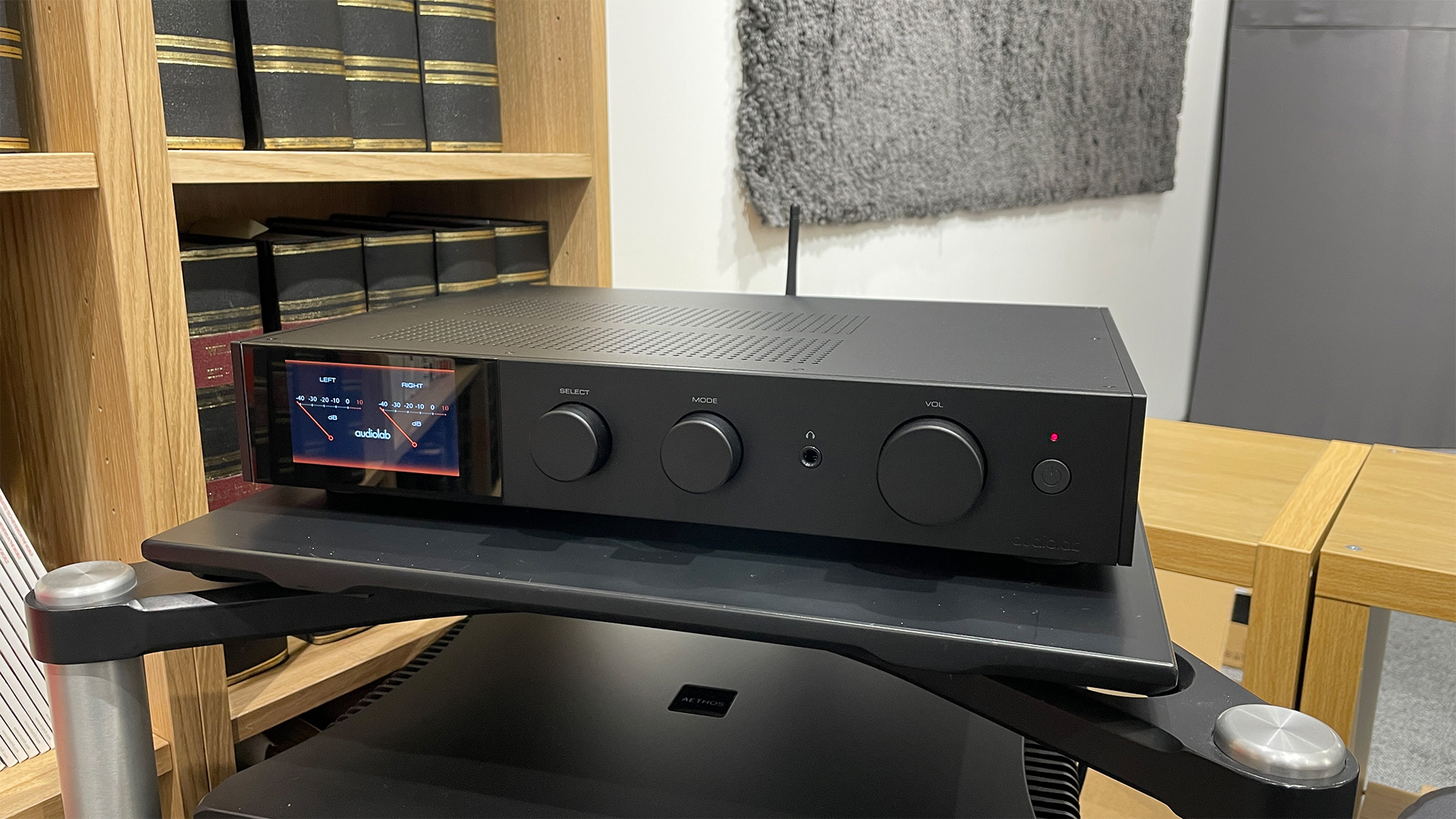
Overall, the Audiolab 9000A ticks most boxes. It is superbly made and nice to use. The company hasn’t skimped on features so it is likely to slot in easily into even the most complex systems. This is a flexible product too, offering the user an easy upgrade route when the time arises.
Then we come to sound. In terms of clarity, precision and the ability to render convincing instrumental textures, this amplifier is up there with the best at the price. The competition is tough though, and if you are willing to forgo some of the 9000A’s features then there are alternatives that get to the heart of the music better. The choice, as ever, is yours.
SCORES
- Sound 4
- Build 5
- Features 5
MORE:
Read our review of the Naim Nait XS3
Also consider the Rega Elicit Mk5
Read our Cambridge CXA81 review
Best stereo amplifiers: the best integrated amps you can buy







